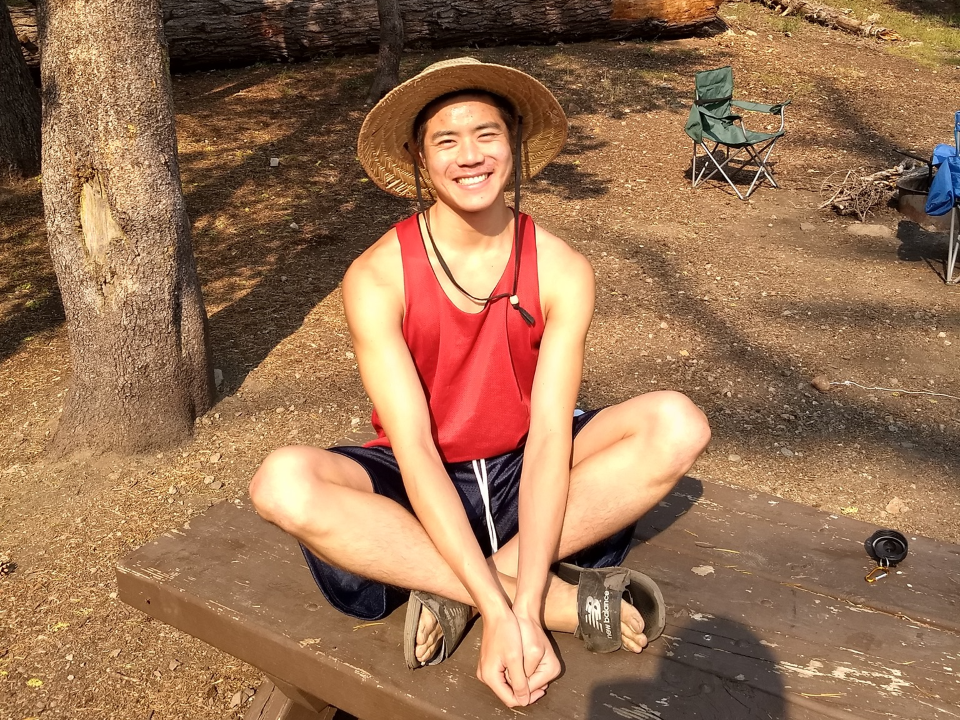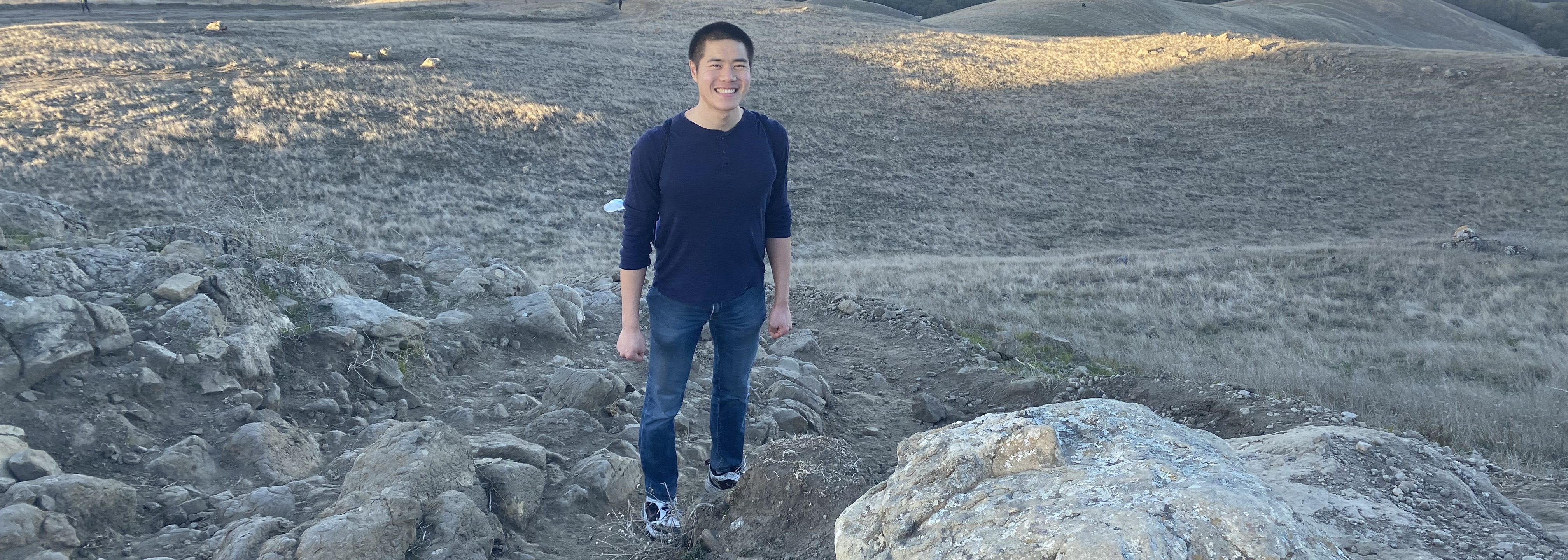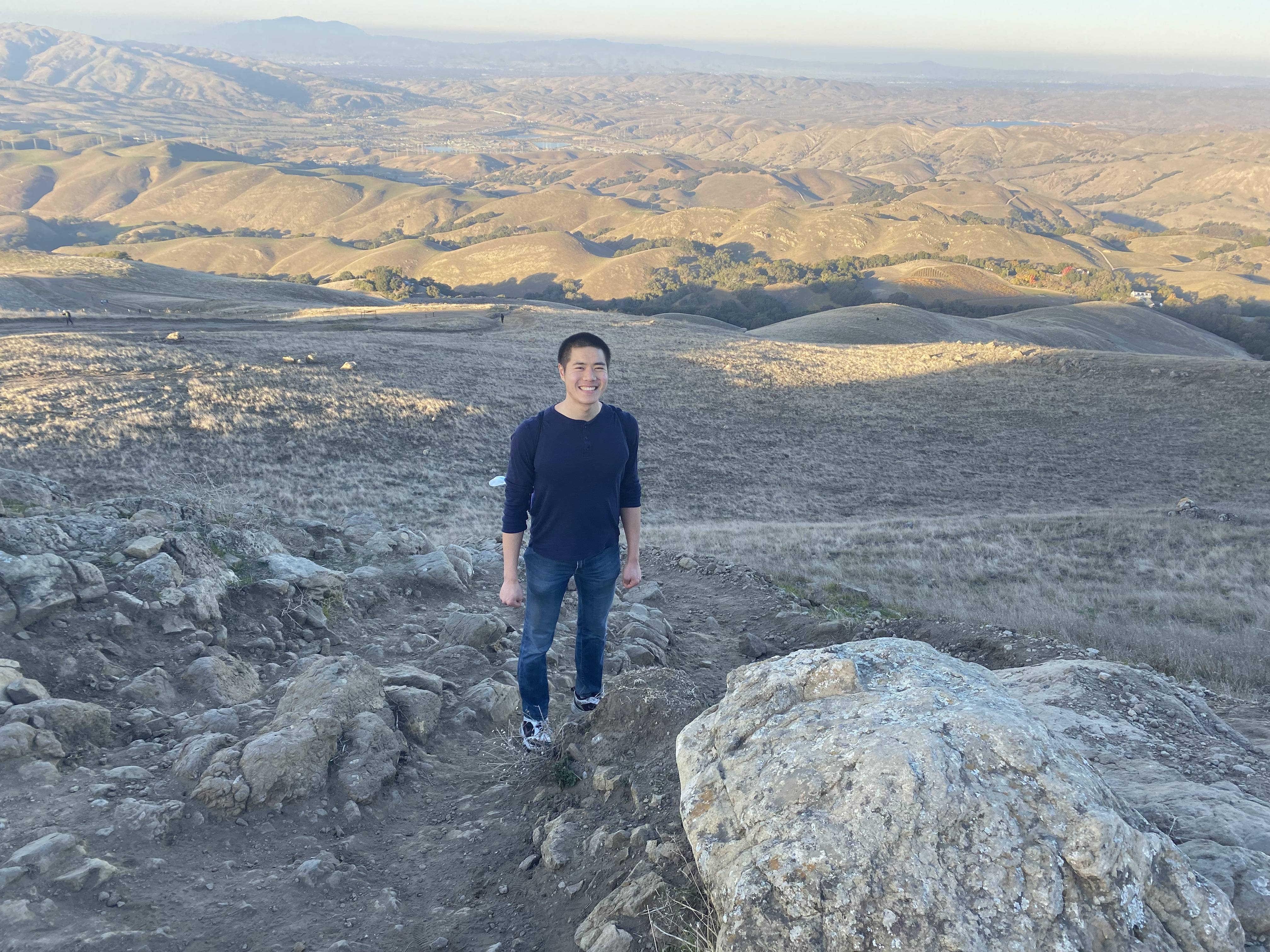Published: 11/27/2022
In this ongoing series profiling student leaders who are building a more sustainable healthcare system that begins to address the environmental justice impacts of climate change head-on, we speak with fourth-year medical student Jonathan Lu.
By Jamie Hansen, Communications Manager
Growing up in Fremont, California, Jonathan Lu gained an early appreciation for the environment and humanity’s connection to it through time spent hiking in local parks and elementary school lessons on water conservation, cycles of ecology, and recycling.
Then, in middle school, a lesson about global warming sparked his concern. “I remember thinking, ‘that sounds scary, but I’m sure the adults have it covered,” he recalls. But as he grew up, he saw governmental dysfunction repeatedly stymie action to address climate change and environmental degradation. Eventually, he realized that the adults didn’t necessarily have it all under control.
“So now,” he said, “Here we are, and people have to do more than just their day job, I think, just to make sure the world is alive.”

This realization has driven Lu, now a fourth year medical student at Stanford, to become a student leader in efforts to make healthcare more sustainable and more responsive to patients impacted by climate change. In 2020, he co-founded the student-driven advocacy group Stanford Climate and Health. This group provides a space for the Stanford community to take action on climate change, planetary and environmental health, and sustainable health care by engaging in advocacy, education, dialogue, and research. He also helped launch the NorCal Symposium on Climate, Health, and Equity, an annual event co-directed by students and faculty from Stanford, UCSF and UC Davis to raise awareness of health risks of climate change — and their impacts on environmental justice and frontline communities.
“Jonathan is a great leader, incredibly courteous and inclusive — the whole package you’d want in a physician and physician-activist,” said Dr. Barbara Erny, adjunct clinical associate professor of medicine and a leader in healthcare sustainability, who has worked with Lu as a faculty advisor to the Climate and Health group. “He always reminds us that climate change doesn’t impact everyone’s health equally, and that we have to address this through the lens of equity and environmental justice.”
[Jonathan] always reminds us that climate change doesn’t impact everyone’s health equally, and that we have to address this through the lens of equity and environmental justice.
Dr. Barbara Erny
An unexpected path
As a high schooler, Lu didn’t plan on becoming a medical student, let alone a community organizer. However, a passion for connecting with people, building community, and working together toward common goals ultimately steered him to his current path.
“Growing up, I thought organizing was for the kids who did Model United Nations or ran for class president,” said Lu. He entered college as a computer science major, a career choice that felt more practical at the time. Then he joined a climate advocacy group, Citizens Climate Lobby, and began to see a new role for himself. “They offered an organizing space and culture where people could be their whole selves,” he recalled. “It felt a little like church. This way of being stayed with me and keeps driving me to stay involved and meet new people.”
Around the same time, Lu began volunteering at an emergency medicine department, and this experience drove his interest in pursuing a career in medicine. “Getting to talk to patients, bring them blankets, and check on them—I liked this form of service and communication, building relationships both inside the medical school and outside the academic bubble,” he recalled.
Now, as a medical student at Stanford, Lu sees the medical and equity impacts of climate change first-hand. He recalls seeing and hearing about patients impacted by heat and wildfire smoke, including farmworkers who developed end-stage renal disease due to laboring in extreme heat.
From medical school to climate advocacy

In early 2020, Lu and like-minded peers including Ashley Jowell, Rebecca Bromley-Dulfano, Navami Jain, Natalie Baker, and Dr. Anita Lowe came together to form the Stanford Climate and Health student group. They received support from a range of faculty and staff inspired by their work and passion, including Barbara Erny, Lisa Patel, Luciana Herman, Lisa Shieh, Kathy Burke, and more.
A coalition of students and faculty soon began discussing how to build momentum for sustainability in healthcare, while working to better incorporate environmental justice.
“We wanted to highlight important work being done by community organizations around climate and health, while also mobilizing healthcare professionals to see climate activism and sustainability as in their lane,” Lu said. “At the time, it wasn’t common knowledge that health care systems actually produce a lot of the greenhouse gases.” Together with UCSF students and faculty, they launched the first NorCal Symposium on Climate, Health, and Equity in the fall of 2020 and have continued the event every year since.
The Climate and Health group has since become a hub for undergraduate, graduate, and medical students alike interested in climate change and health equity, Lu said. A Community Advocacy sub-group has built a partnership with environmental justice organizations in Stockton: Catholic Charities of the Diocese of Stockton and Little Manila Rising. Led by medical student India Rogers-Shepp and college student Avanthi Puvvala, they are supporting the local groups with advocacy around air pollution, an effort that was featured on the California Air Resources Board’s Environmental Justice blog. Other students have come together to research the sustainability and efficacy of Stanford’s hospital switching to reusable, laundered gowns, and to advocate for adding climate change to the medical school curriculum.
Collaboration with faculty and staff has been incredibly powerful, Lu said.
“It is a different relationship than, say, when you work in the lab of a principal investigator who funds you. That’s more of an employee-employer relationship. In Stanford Climate and Health’s case, the faculty are really just showing up and asking how they can be helpful, building connections with us, and co-hosting the symposium with us,” he said. “That, I think, has been transformative because we as students can bring a groundswell of momentum, while faculty can bring credibility and connections to key university leaders.”
In Stanford Climate and Health’s case, the faculty are really just showing up and asking how they can be helpful, building connections with us, and co-hosting the symposium with us. That, I think, has been transformative because we as students can bring a groundswell of momentum, while faculty can bring credibility and connections to key university leaders.
Jonathan Lu
Kathy Burke, Human and Planetary Health initiative lead for the Woods Institute for the Environment at the Stanford Doerr School of Sustainability, credited Lu’s dedication, humor, kindness, and inclusiveness for helping to grow the emerging field of climate and health among Stanford students.
Faculty mentor, Dr. Lisa Patel, a clinical assistant professor of pediatrics and deputy executive director of the Medical Society Consortium on Climate and Health, agreed. “The climate crisis can feel overwhelming, which is why leaders like Jonathan Lu are a gift to the movement,” she said. “He has a calm and positive energy that he invests in each person who joins him in the work. But most importantly, he shows people that joining the climate movement is easy—which itself is no easy task.”
A future in medicine and advocacy
Lu says one area where he feels the need to keep growing has been in emphasizing environmental justice. He noted that environmental justice communities — the low-income communities and communities of color who have been most impacted by environmental pollution and structurally racist policies like redlining — have been fighting for decades to be centered in decision-making that impacts them. Lu said he’s been influenced by a number of inspiring environmental justice leaders, including Dr. Nicky Sheats from the New Jersey Environmental Justice Alliance, Violet Saena from Climate Resilient Communities, Jonathan Pruitt from Catholic Charities of the Diocese of Stockton, and Ms. Margaret Gordon from West Oakland Environmental Indicators Project.
Lu feels a tension in how to make climate and health efforts genuinely work for environmental justice communities. Addressing that tension, he says, starts with listening. “As a privileged Asian dude, I’m still learning a lot about that,” he said.
“Working with communities on the front lines of climate change leads to more transformative work,” he said. “I think the academic work will happen, there’s a machine pushing that. But building a more equitable system, and a sustainable future for everyone, that’s harder. I want to push myself to go beyond these comfortable professional spaces, to really break down silos.”
To achieve this in his career, Lu hopes to remain connected to an academic medical center while practicing family medicine. Rather than limiting his efforts to the clinic, he plans to continue his climate and health advocacy, informed by the experiences of his patients.
“I want to be the kind of doctor who can co-organize and co-advocate with their patients on what they’re experiencing,” he said. “Whether it’s farm-workers who need healthier working conditions, or whatever the case may be, that’s very important to me.”

